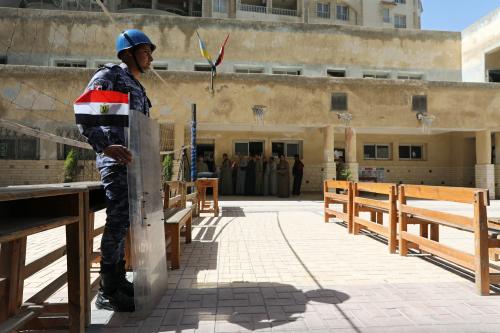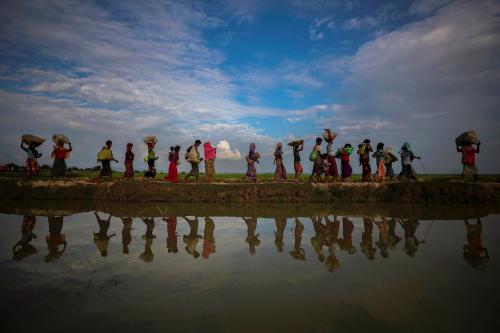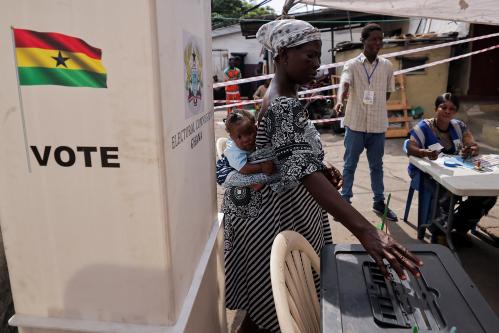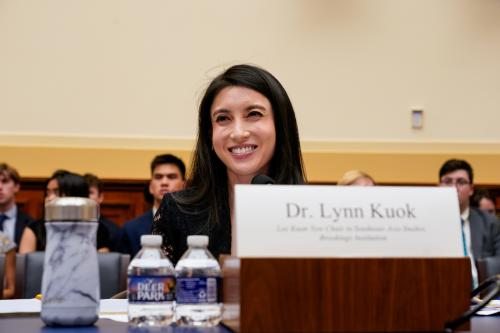For anyone working to end poverty, fragile states call for the ultimate juggling act. Countries in conflict seldom control their territories, and even when most areas are at peace, others may still be engulfed by violence for decades to come. The intensity of civil wars can ebb and flow, while forcibly displaced people cross borders in search of shelter. Politicians and warlords can shift alliances abruptly and neighboring states often interfere militarily to prop up local proteges. When geopolitics is not at play, internal disputes over land, water, or other scarce resources can ignite fighting between local populations. To make sense of all these moving parts, even the most knowledgeable experts must look for new ways to comprehend the world.
If this scenario seems too far-fetched, just look at the data. About 50 percent of people affected by extreme poverty will likely live in fragile states by 2030. Conflicts today drive 80 percent of all humanitarian needs. In 2017, 150 major violent incidents in 22 countries harmed about 300 aid workers, killing 30 percent more than in 2016. Violence against humanitarian personnel, facilities, and assets is a recurrent challenge in Afghanistan, the Central African Republic, Somalia, South Sudan, Syria, and Yemen. These are precisely the types of countries where international financial institutions such as the World Bank have intensified their work, and where development agencies pay vast sums of money to private companies to supervise high-risk projects on their behalf. The U.S. Agency for International Development (USAID), for example, spent $242 million on third-party monitoring contracts between 2006-2015 in Afghanistan. Insecurity, lack of access, and unpredictability have thus become major obstacles for poverty reduction in the places where sustainable and inclusive economic growth are lacking the most.
What can be done? To better manage the unknown, development professionals might want to take a leaf from the intelligence community book and draw inspiration from how spies try to predict the future. Reduced to its simplest terms, the CIA defines intelligence as “knowledge and foreknowledge of the world around us—the prelude to decisions by policymakers.” Other definitions emphasize the collection, processing, integration, analysis, and interpretation of available information from closed and open sources. Development practitioners are not spies, nor should they aspire to be. Further, the idea that project managers and economists should behave like spies is bound to raise eyebrows for professionals driven by the quest for sustainability and equity. Yet, the methodology of intelligence is well-suited to paint in our minds the interplay of actions, information, and analysis needed to navigate the complex, uncertain, and downright dangerous environments where extreme poverty stubbornly persists. This approach is not about acting like James Bond, but rather about thinking like him.
One can start by changing how international development agencies analyze conflict and violence. Development organizations began integrating fragility and conflict into their country analytics in the early 2000s. A 2016 paper reviewed 35 different frameworks that address fragility, risks, and resilience to many shocks, ranging from violence to pandemics and natural hazards. These reports provide valuable global insights for planning country strategies and policies. But they say little about how conflict trends will play out on the ground, where projects are actually implemented. They are static instruments that cannot be used to map out how a terrorist group today has shifted its areas of operations from two weeks ago, what happens if schools or roads are built in areas controlled by rebels, or how likely it is that government security forces deployed in conflict zones will abuse women. Without such granular analysis, the professionals responsible for the success of projects on the ground are left to their own devices and risk operating in the dark.
To create intelligence analysis for poverty alleviation, development and security actors should break entrenched silos and agree on intelligence sharing protocols. These instruments are used by soldiers and spies all over the world. They would require, for instance, giving aid workers in charge of massive poverty-reduction projects access to confidential field reports from U.N. peacekeepers and diplomatic cables from embassies whose countries provide large sums of money. Intelligence collection could mix closed with open sources, such as statistics from humanitarian agencies or reports by faith-based groups who provide relief in conflict zones. Analysts could also cross-reference them with academic studies, baseline surveys prepared by economists, satellite and drone images, or even interviews with private firms. Choosing where to implement projects and knowing the individual profiles of allies and spoilers would then become an institutionalized practice to improve decisionmaking on the ground.
This approach sounds unorthodox, but some bilateral donor agencies are already exploring similar ideas. For example, USAID’s Global Development Lab has commissioned a study to look into the feasibility of “rapid expeditionary development” (RED). Modeled after special forces, RED teams would be able to live and work in austere, non-permissive environments, performing as de facto reconnaissance functions in advance of more traditional development missions. While the feasibility of such ideas remains in question, thinking about them ensures at least one benefit—all key players, whether in the military, humanitarian arena, or development, must step out of their comfort zones to imagine a more effective way of working that serves those in need. To this end, intelligence sharing and analysis can bring about not only better projects, but also a common ethos among soldiers, diplomats, economists, and humanitarians.
The Brookings Institution is committed to quality, independence, and impact.
We are supported by a diverse array of funders. In line with our values and policies, each Brookings publication represents the sole views of its author(s).








Commentary
To end poverty, think like a spy
March 11, 2019